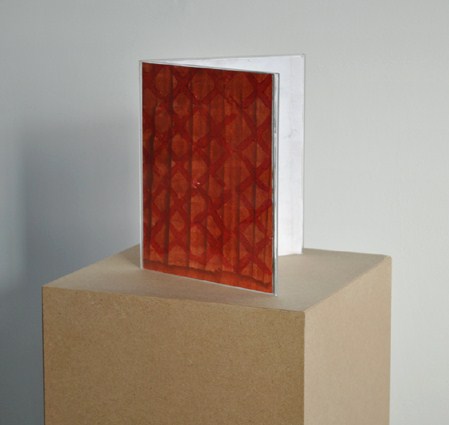
Your Affectionate Friend
David Buckley
Opening 7pm to 10pm Thursday 13th January 2011
Then open 14th to the 19th
There is a short film conceived by Samuel Beckett in collaboration with actor JackMacGowran in which the actor delivers a monologue to camera describing his own particular, performative way of spending time. MacGowran relates how his left pocket is full of stones and how he methodically places each stone in his mouth before then placing it in his right pocket, until his left pocket is empty and his right pocket full. He then describes how he repeats the procedure, in reverse, until all the stones are back where they started. At no stage do we see these stones, but we can imagine them quite accurately – pebbles probably, which would become dark when wet. The use of stones as props in an existential choreography is quite common, and through the work of artists like Smithson, Fulton and Long a philosophical proposition acquires an artistic identity.
In Paul Auster’s novel ‘The Music of Chance’ the central protagonist Nashe gambles away his freedom in a poker game with two effete (read homosexual), older gentlemen who may even have cheated. In order to regain his liberty they set him a task to assemble a field of stones into a useless length of dry stone wall, useless because it demarcates nothing, serves as a boundary to nothing. Aside from the building of the wall functioning as a punishment, the wall itself has a value not dissimilar to that of the work of art – it is a product of refined material skill, it can be read as having a historical lineage, it is borne of an act which brings physical order to chaos. What is interesting in the novel, which assigns a philosophical value to stone similar to that of Beckett’s pebbles, is that a frame is provided for both the act of construction and the wall itself, by the two homosexual characters who are, in fact, the curators of the event. A juxtaposition is created between the authenticity and desperation of the object and the ironical purpose which it is asked to serve.
What is in question here is the conflict between works of art and the connoisseurship of those who end up possessing them, or who find themselves in a position to control the conditions of their reception. Auster’s work is quite clear in conferring values to these roles: the artist is heterosexual, physically strong and has been cheated by circumstance. The connoisseur is homosexual, fraudulent and capricious. The works in this exhibition use questions of connoisseurship, placement and arrangement (these last two should be over-pronounced, perhaps with a French accent...) to heighten and complicate the power structures natural to the work of art and the gallery context. To relate the gesturality of abstract expressionist painting to the gesture of refinement which would move an objet d'art a little to the left in order to make the spatial composition more agreeable seems strikingly, powerfully wrong. There is also an appealing wrongness in underlining the work of art’s relationship with the objet d’art, underlining the commodity status of the work of art which the gallery context so carefully conceals.
The end result however is not so much about critiquing the assumptions attendant upon different kinds of bodily gesture. Rather, an event is staged in which the viewer might recognise their own bodilyness in the gesture that is limp or ponderous, the gesture that is not properly articulated. By doing so it is hoped that a pathos can be introduced, which might further dramatise the relationship between the viewer and object.
David Buckley
|
|
|